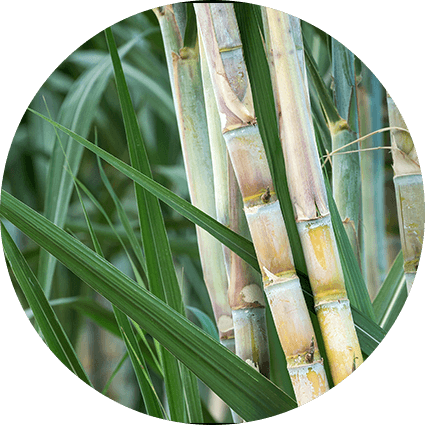Plant
Planting setts

Growing
All living things need a supply of energy to survive. Our main sources of energy are substances called carbohydrates. Green plants make carbohydrates (sugars and starches) using energy from the sun by a process called photosynthesis. Photosynthesis comes from the Greek work “photo” meaning “light” and “synthesis” meaning “putting together”. In green plants sugar is literally “put together” by light.
In the leaves of green plants is a substance called chlorophyll. Chlorophyll gives the leaves their green colour.
Chlorophyll traps light energy from the sun and starts the process of photosynthesis. This involves converting water and carbon dioxide into sugars (carbohydrates). Water and minerals are absorbed from the soil through the plant’s roots. Carbon dioxide from the air enters the leaves via tiny pores called stomata. At the end of the process oxygen is released into the atmosphere.
Plants use sugars as an immediate source of energy for growth and as “building blocks” to make up all the other substances the plant needs for growth and repair especially cellulose, the standard chemical for stalks and wood. Excess sugars provide an energy reserve at night when plants cannot photosynthesise, and can also be stored by the plant for future use. Sugar cane (Saccharum officinarum) is a very tall perennial tropical grass with bamboo-like jointed stems up to 5 m in height.
The outside of the stalk is hard and golden yellow in colour. This very tough, shiny, outer coating protects the sweet, woody, inner fibre. The thick stalks grow in bunches. Mature cane can be up to 5 cm in diameter. Photosynthesis converts energy from the sun into chemical energy (in the sugar) which provides us with an energy source. When we eat sugar, our metabolism reverses the process, turning the sugar into carbon dioxide and water so releasing the energy to supply our body’s needs.
This energy can be produced by the sugar cane plant year after year. It is renewable energy.
Irrigation
Sugar cane likes a rich, moist soil, plenty of sunlight and abundant water. Irrigation and drainage are used to regulate the supply of natural rainwater according to seasonal fluctuations.
Harvesting
After 11-18 months the cane is ready for cutting. The dry leaves (“trash”) are aften burned off before harvesting. The fire quickly spreads through the dry matter and does not damage the canes. The canes are cut as close to the ground as possible. At one time all sugar cane was harvested by hand. Modern machines are also used to cut the stalks and strip the leaves.